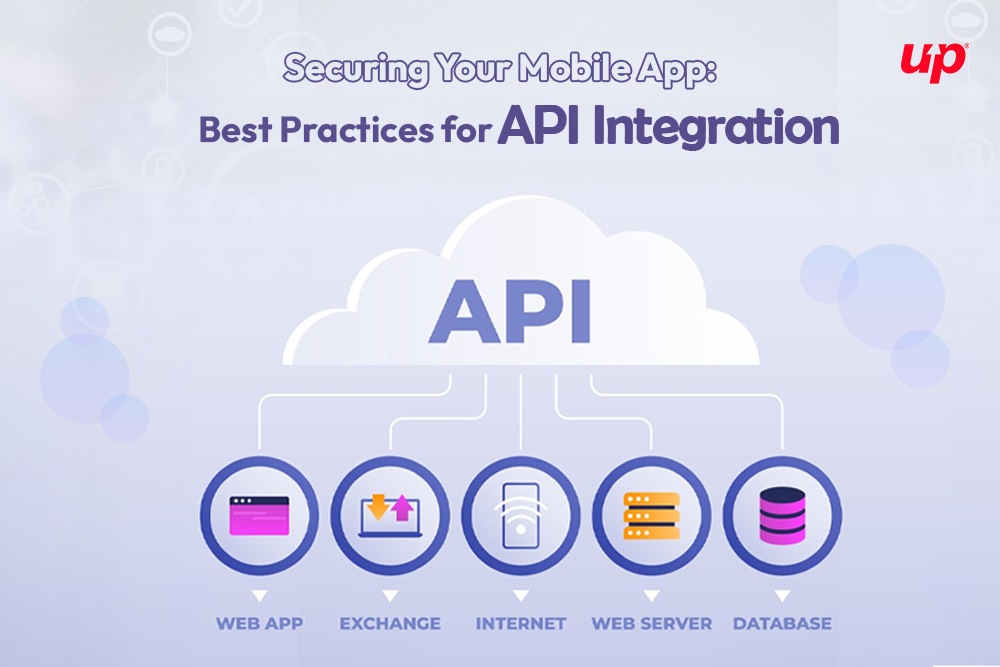In today’s digital age, securing mobile apps is paramount. With the rise in cyber threats, ensuring the security of API integration is critical to protect user data and maintain trust. APIs (Application Programming Interfaces) are vital. They connect services and streamline functions in mobile apps. However, without strong API security, these links can become vulnerable. This blog outlines the API security best practices 2024 to help developers secure their mobile app APIs effectively.
1. Strong Authentication and Authorization
The key process is protecting APIs in mobile apps. It requires strong authentication and authorization.
OAuth2 and JWT
OAuth2 is a widely accepted protocol for authorization, enabling secure token-based authentication. JWT (JSON Web Tokens) are used to transmit claims between parties. These tokens are compact, URL-safe, and ensure that the information is verified and trusted.
API Keys Management
API keys are very important in providing Identity to the user or an application. However, these keys must be managed well and replaced with other keys from time to time to avoid cases of people with ill intent getting hold of the key.
2. HTTPS for Secure Communication
Implementing strong authentication and authorization mechanisms is a fundamental step in securing APIs in mobile apps.
TLS Encryption
TLS (Transport Layer Security) encodes data during transmission. This stops evil introspection from seeing it. Encryption with the latest TLS should be used for getting the security encrypted with the best features.
Certificate Pinning
In this technique, the Server Key is linked to a Client, and then only communications can take place between the client and the particular server. This eliminates man-in-the-middle attacks which involve the use of fake certificates.
3. Rate Limiting and Throttling
To avoid abuse and to control traffic API rate limiting and throttling should be used.
Rate Limiting
This can be completed by setting up limits on the number of API requests that can be made by a particular user within a given time frame. This assists in controlling denial-of-service (DoS) and serving to make good usage.
Throttling
This technique controls the traffic by reducing the rate of requests for some time when the load is high. Throttling is used mainly when many requests are received. It keeps the service available and the bandwidth high.
4. Input Validation and Sanitization
It is recommended to implement input validation and Sanitization for APIs because the incoming data should meet a certain format and/or data type.
Input Validation
Always verify the compatibility of its data types in format and range with the received data. This checks that your API only operates on valid data and not any other data that can be entropic to your system.
Sanitization
Sanitize input data for stripping out, or escaping, characters that could be dangerous in one way or another. This step is important. It prevents problems like injection attacks. These attacks are likely to hinder your database and application.
5. Regular Security Audits and Penetration Testing
Continual security assessments help prevent security threats. They include assessments like Security Assessment and Client Server Penetration Testing for APIs.
Security Audits
These are thorough examinations of your API code. They are the result of reconciliation assessments of your API’s settings and deployment surroundings. This is because regular audits help find parts that may be obsolete. They also find incorrect configurations and other vulnerabilities.
Penetration Testing:
Using such a service one can model attacks that may exist in the real world to know how much API one develops may be disposed of. Monitoring and Logging
The API monitoring and logging must be properly done to have code security and compliance.
Real-Time Monitoring
Utilize monitoring tools for the APIs and see the usage in real-time. This helps to quickly target and end frightening activities. There are anomaly detection algorithms that can notify you of the violation of theories that signify an attack.
Comprehensive Logging
It is recommended that all incoming and outgoing API requests and responses should be well-recorded. These logs should contain the date and time of the action. They should also have the user’s ID number, the type of request, and any error messages.
7. Use of API Gateways
API gateway security is also another line of defense in charge of managing API security policies.
Centralized Management
API Management gateways enable one point of control of all the APIs. This also helps with implementing security policies. This is true because enforcing them is standardized at the endpoints.
Built-In Security Features
It can also include such as rate limiting, authentication, data encryption, or traffic monitoring for the API gateways. The use of these features can greatly improve the degree of your API defense.
8. Secure Data Storage
Transit and storage data security are critical to an organization. Here’s how you can ensure secure data storage: Here’s how you can ensure secure data storage:
Encryption
Encrypt the data and make sure the encryption is beyond the basic level. This shows that the data to be sent should be encrypted through HTTPS/TLS. And, when stored, the data should be encrypted through AES or other reliable types.
Tokenization
Substitute all the sensitive data elements with non-sensitive data elements known as tokens. Tokenization is useful. It is for cases where payment information and personal identifiers are involved. It decreases the risk of data loss.
9. Implementation of CORS (Cross-Origin Resource Sharing)
Also, proper configuration of CORS policies is of high importance when determining which domains could use your APIs.
CORS Configuration
Set the list of domains that have access to your API and set what methods are allowed and the headers that should be used. This assists in avoiding situations where other domains that are not authorized to make API calls, make them.
Strict Policies
To reduce exposure CORS policies should be very strict. Some precautions include: allowing only trusted domains. Use wildcards only in limited cases.
10. Staying Updated with Security Patches
It is a basic principle of API security to update all the software parts and their dependencies.
Regular Updates
Many software flaws are reported and some of these are promptly sealed to prevent exploitation. Thus, having the latest software updates benefits you in the sense that the updates come with the latest security patches.
Patch Management Process
To effectively deal with the problem, it is necessary to establish a strict procedure for applying security patches. This means checking for updates often. You test patches on the staging servers and then put them on the production servers.
Conclusion
In conclusion, security for mobile apps is crucial now. That’s because the current threat landscape is why following tips for stronger API integration security is important for app development. By following the mobile application security guidelines above, developers can protect their apps from future security breaches. Secure mobile app security best practices are one of the specializations of Fluper. These are the best practices for mobile app security. Our team of pros can help you apply them to make your APIs secure and reliable. You can reach Fluper today for professional API integration services. This opens a new possibility for having a solid and protected mobile app. Allow us to help you decide which of the best API security solutions you should use and how to use them to your advantage.











